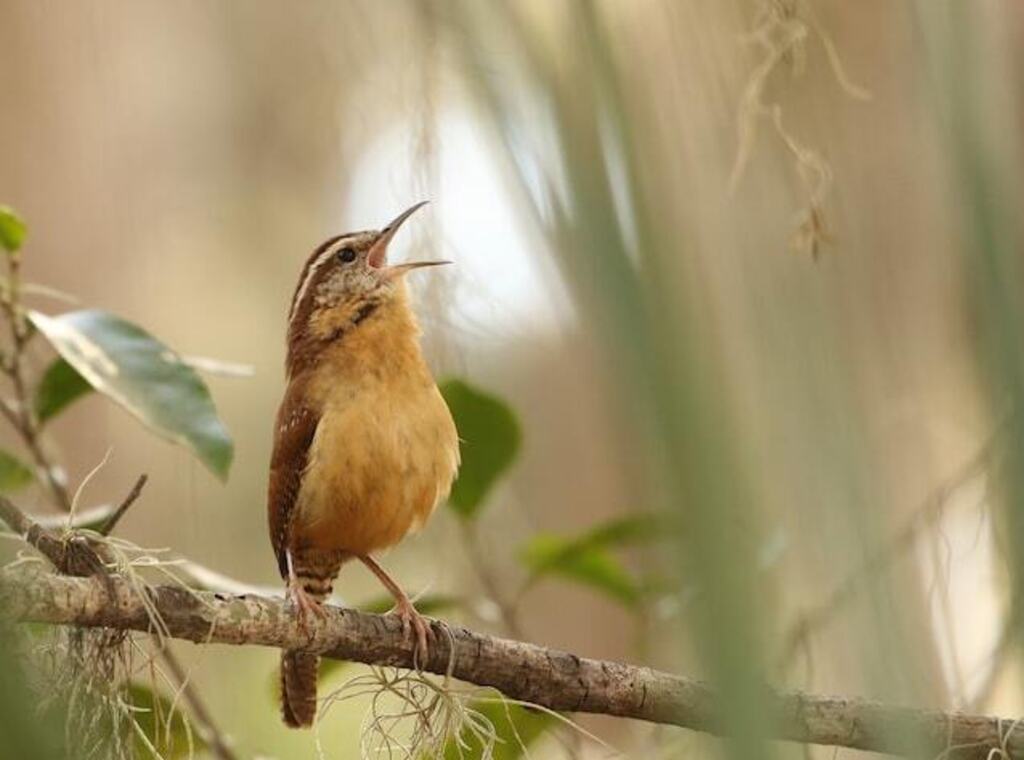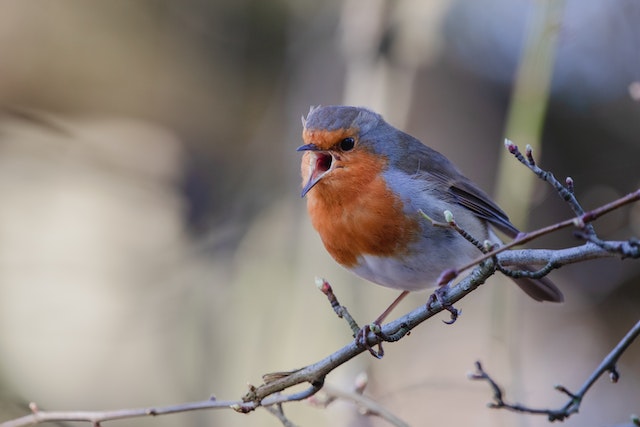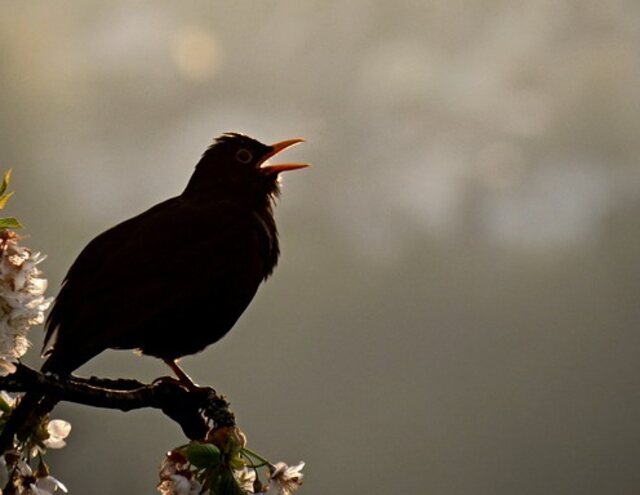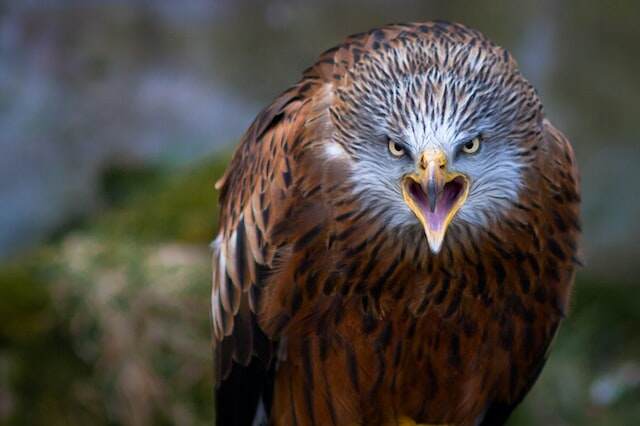Oh, my feathers! Have you ever taken a moment to appreciate the wonder of birds? These feathered friends bring a level of beauty and diversity to our natural environment that is simply awe-inspiring.
But let’s be real, spotting these elusive creatures can be a real challenge, especially when they’re playing hide-and-seek among the leaves or soaring high above.
Fear not, newbie bird watchers! I’ve got a tweet-tastic trick up my wing. Did you know that birds have their own unique calls?
That’s right, each bird has its own chirpy, squawky, or melodic tune that sets them apart from the rest. And with a little bit of practice, you can learn to identify these feathered friends by their distinctive vocals.
So, what are you waiting for? Let’s spread our wings and dive into this beginner’s guide on how to identify birds by sounds and calls. Trust me, you’ll be singing their praises in no time!
Table of Contents
How to Identify Birds By Sounds?
Understanding Bird Sounds and Calls
Step into the mesmerizing world of bird calls! Each enchanting vocalization serves a unique purpose, from communicating with other birds to marking territory, attracting mates, and warning of danger.
With songs, chirps, whistles, and trills, each call is a unique masterpiece that varies in pitch, duration, volume, and complexity depending on the bird species and the call’s purpose.
But bird calls are more than just a language – they’re a captivating symphony that can transport you to a whole new world.
From the soothing coos of doves to the haunting calls of loons and the cheerful tweets of sparrows, every call is a mesmerizing melody that can fill you with wonder and awe.
Common Types of Bird Calls
By understanding the different types of bird calls, you can begin to identify birds by their unique vocalizations. Listen closely to the birds around you and start deciphering their calls to unlock the secrets of the avian world!
Let’s dive deeper into the mesmerizing world of bird calls and explore some of the most common types of calls used by birds to communicate:
Song
Behold the mesmerizing and complex world of bird songs! Male birds use a stunning array of musical notes to woo a mate or claim their territory, creating a symphony of unique sounds that can identify their species.
The enchanting tunes of the American Robin, the haunting melodies of the Wood Thrush, and the sweet trills of the Nightingale are just a few examples of the incredible range of bird songs that exist in the world.
These captivating sounds are a true masterpiece of nature, and each one is like a special key that unlocks the beauty and diversity of the avian kingdom.
Chirp
The world of bird chirps is a symphony of sound, with each species having its own unique tune. Short and simple, these chirps are used for general communication and can vary in pitch, duration, and rhythm.
From the high-pitched chirps of sparrows to the sharp peeps of chickadees, they add a delightful soundtrack to any birdwatching adventure.
The cheerful chirps of birds can create a joyful ambiance and make you feel like you’re surrounded by a lively community of feathered friends. So listen closely and let the chirping birds transport you to a world of wonder and delight.
Trill
The trill, a rapid and repetitive sound made by birds like wrens and sparrows, is more than just a call – it’s a symphony of joy and excitement! These energetic bursts of sound vary in pitch and duration, and are used for everything from territorial disputes to attracting a mate.
Each trill is a unique work of art, with its own rhythm and melody that can leave you spellbound. Listen closely, and you might hear the cascading trills of the Winter Wren or the lively trills of the Dark-eyed Junco. Whatever the species, trills are sure to bring a burst of excitement and wonder to any bird lover’s heart.
Hoot
Let your ears be enchanted by the enchanting hoots of the owl kingdom! These deep and resonant calls are not only used to communicate with other owls, but also to establish territorial dominance.
Whether it’s the haunting hoots of the Great Horned Owl or the eerie calls of the Barred Owl, each hoot is a unique masterpiece that can send shivers down your spine.
Listen closely, and you may even hear the soft murmurs of the Elf Owl or the melodic hoots of the Eastern Screech Owl. So come along on this journey into the mesmerizing world of hoots and discover the many wonders it has to offer.
Whistle
Whistles are one of the most fascinating types of bird calls. Clear and sharp, they can be heard from afar, used by birds like warblers and thrushes to communicate with their feathered friends or defend their territory.
Whether it’s the musical whistles of the Black-capped Chickadee or the piercing whistles of the Cedar Waxwing, these sounds are designed to grab your attention. Listen closely, and you’ll discover a whole world of variation in pitch, volume, and complexity.
These bird calls are not just beautiful, but they’re also an essential part of the ecosystem, helping birds to communicate and survive in their natural habitat.
Coo
The coo is a melodic and comforting sound that resonates from the doves and pigeons as they communicate with their mates and mark their territory.
The sweet and tender coos of the Mourning Dove can lull you into a peaceful state, while the throaty coos of the Rock Pigeon have a distinct charm that can captivate your senses.
These sounds can transport you to a serene and tranquil world, far from the chaos and noise of everyday life. So close your eyes and let the soft coos of the doves and pigeons fill your heart with warmth and relaxation.
Squawk
Get ready to cover your ears when you hear the deafening squawk! This loud and harsh call is the trademark of larger birds, such as parrots, macaws, and crows, and is often heard echoing through the forest.
Squawks can serve a variety of purposes, from signaling danger to communicating with other birds in the flock. With its piercing and unmistakable sound, the squawk is one of the most recognizable bird calls around.
So keep your eyes peeled and your ears open for these noisy creatures – you never know when you might hear a squawk!
Click
Behold the marvelous “click” sound produced by the rapid opening and closing of the bills of certain avian species like kingfishers and woodpeckers. This sharp and distinctive sound is employed as a territorial call or as a means to court a mate.
It’s a unique and fascinating sound that can instantly transport you to the natural world, evoking images of lush green forests and pristine rivers.
So keep your ears perked and your heart open to the wondrous sounds of the feathered friends around you, and let the captivating click of these birds leave you enchanted and entranced.
Gurgle
Dive into the fascinating world of waterfowl courtship with the delightful sound of the gurgle. This bubbly and melodious call is the perfect accompaniment to a romantic courtship display.
Ducks and geese are among the birds that use this sound to attract a mate, with the gurgle often accompanied by head bobbing and wing flapping. Its playful and joyful melody echoes through the air, filling the listener with wonder and amazement.
So next time you’re by the water’s edge, keep an ear out for the delightful gurgle and let it transport you to a world of love and romance in the bird kingdom.
Peep
Behold, the delightful sound of the peep! This short and sweet, high-pitched call is a favorite of birds such as chickadees and finches.
Used for communication within the flock or to signal alarm, the peep is a versatile and essential part of a bird’s vocabulary. With its cheerful and lively tone, the peep is a call that can bring a smile to any bird watcher’s face.
So keep your ears peeled for the sweet sound of the peep on your next bird watching adventure and let it brighten up your day!
Croak
Step into the mysterious world of bird calls with the eerie and distinct croak! Made by birds such as ravens and crows, this deep, guttural sound is sure to send shivers down your spine.
The croak is often used as a territorial call, a warning signal for danger, or as a means of attracting a mate. With its haunting and unforgettable tone, the croak is a sound that is not easily forgotten.
So listen closely and let yourself be transported to the dark and intriguing world of these intelligent and enigmatic birds.
Tips for Identifying Birds by Their Calls
Identifying birds by their calls can be challenging, especially if you are new to bird watching. Here are some tips to help you identify birds by their calls:
Listen carefully
Unlock the secrets of bird identification with these tips for identifying birds by their calls. To become an expert, listen carefully to the pitch, duration, and rhythm of the bird’s call. Pay attention to unique or distinctive sounds, such as a distinctive trill or a musical warble.
Visualize the bird: Try to picture the bird that is making the call, and note any physical characteristics that may help with identification, such as its size, shape, and color. Finally, practice, practice, practice: The more you listen and observe, the easier it will become to identify birds by their calls.
Observe the bird’s behavior
To identify a bird by its call, observe its behavior as it vocalizes. Pay attention to its head, body, or wing movements and see if it repeats the call several times. You can also try to distinguish the pitch, rhythm, and tone of the call to help identify the species. Listen carefully for any distinct features, such as a unique pattern or melody.
Another useful tip is to use bird call apps or recordings to compare and match the sound you hear. With a bit of patience and practice, you can unlock the mystery of bird calls and discover the many wonders of the avian world.
Consult a field guide
Identifying birds by their calls can be a challenging but rewarding experience. To make the process easier, consult a field guide that includes descriptions and recordings of each bird’s call.
Listening to the recordings can help you distinguish between similar-sounding calls and accurately identify the bird species. Additionally, pay attention to the habitat and behavior of the bird, as these can also provide clues to its identity.
Practice, practice, practice
Bird calls are an important aspect of bird identification and can be tricky to differentiate. But fear not, with practice, anyone can learn to identify birds by their calls.To start, try taking a recording of a bird call and listen to it several times until you can recognize it without hesitation.
Next, pay attention to the pitch, duration, and rhythm of the call, as these can help you differentiate between similar bird species. Additionally, try listening for the context in which the call is being used. Is it a territorial call, a mating call, or a warning call? By listening for these cues, you can gain a deeper understanding of the birds around you and their behaviors.
Tools for Bird Call Identification
There are several tools that you can use to help identify bird calls, including:
- Smartphone apps: There are many smartphone apps available that can identify bird calls based on audio recordings. Some popular apps include Xeno-Canto, Merlin Bird ID and BirdNET.
- Binoculars: Use binoculars to get a better view of the bird as it makes its call. This can help you identify the species based on its physical characteristics.
- Field guides: Field guides are a valuable resource for identifying birds based on their calls. Many field guides include descriptions of each bird’s call, as well as recordings that you can listen to. for research.
- The Cornell Lab: For a great resource for bird sounds, heck out the K. Lisa Yang Center for Conservation Bioacoustics for research, education and publications.
Mistakes to Avoid When Identifying Bird Calls
Identifying bird calls can be a challenging task, and mistakes can easily be made if you’re not careful enough. Here are some common mistakes to avoid when trying to identify bird calls:
Not listening attentively
Bird calls can be easily drowned out by other sounds, so it’s important to pay close attention and listen carefully. Don’t let their soft chirps and trills slip by unnoticed. Sharpen your senses and give each call the attention it deserves to accurately identify the feathered friend behind the melody.
Ignoring other sensory cues
Don’t be fooled by your ears alone! While bird calls can be a helpful tool for identification, relying solely on them can lead to mistaken identity. To accurately identify a bird’s call, it’s important to consider other sensory cues, such as its physical appearance, behavior, and habitat.
Relying solely on technology
While bird identification apps and recordings can be helpful, they should be used as a supplementary tool rather than a primary source. Relying solely on technology can lead to incorrect identification and a missed opportunity to appreciate the beauty of bird calls in their natural environment.
Not listening carefully enough
Don’t miss a beat – Bird calls can be a master of disguise, blending seamlessly with the ambient soundscape. Tune in with your ears, focus on the call, and avoid distractions to unlock the world of avian communication. Don’t let a subtle chirp or a soft whistle slip through your grasp, as every call holds the key to understanding the fascinating world of birds.
Relying too heavily on visual cues
Don’t be fooled by appearances alone! Although observing the behavior of birds is essential, relying solely on visual cues can lead you down the wrong path. Similar physical features among birds can be misleading, but their calls can be very distinct. So, keep your ears open and stay alert to the unique sounds of each bird species.
Not considering the context
A bird’s call is not always the same and can vary depending on the context. A bird may produce a distinct call to warn of potential danger while using a different call to attract a mate. Context is crucial in understanding bird communication and adds depth to the mesmerizing world of bird calls.
Ignoring the location
Location matters when identifying bird calls. Birds have unique calls specific to their species and can be found in certain areas. To properly identify a bird’s call, you must be in an environment where that species is known to reside. So, make sure you are in the right place to hear the sounds you are looking for.
FAQs
Can all bird species be identified by their calls?
Identifying bird species by their calls can be challenging, and not all bird species can be identified solely by their calls. It’s important to consider the location of the bird and the environment in which it is making its call. Different bird species reside in different areas, so make sure you are in the right location before attempting to identify a bird by its call. With practice and experience, however, you can become adept at recognizing the unique calls of many bird species.
Can bird calls change over time?
Yes, bird calls can change over time. Factors such as environmental changes, competition for resources, and interactions with other bird species can influence the development and evolution of bird calls. Additionally, individual birds can also modify their calls over time, sometimes incorporating elements from other bird species or developing new variations on their own. It’s important to keep these factors in mind when identifying bird calls, as the same species in different locations or at different times may have slightly different calls.
Can bird calls be used to track bird populations?
While bird calls are not a foolproof method for tracking bird populations, they can provide valuable information. By identifying bird calls in a specific location, researchers can estimate the number of bird species present and track changes over time. However, it’s important to note that bird calls alone may not provide a complete picture of bird populations as factors such as migration patterns and habitat loss can also affect population levels.
How can I record bird calls?
To record bird calls, you’ll need a good quality recording device such as a digital recorder or a smartphone app specifically designed for bird call recording. Be sure to choose a quiet location and position yourself as close to the bird as possible without disturbing it. Also, consider using a directional microphone to reduce background noise. It’s important to note that different bird species are found in different locations, so make sure you are in an area where the bird you want to record is known to reside.
Is it legal to record bird calls?
Recording bird calls for personal use is generally legal. However, commercial use of bird call recordings may be subject to regulations and restrictions. For example, selling bird call recordings for hunting or baiting purposes may be prohibited. It’s always a good idea to check local laws and regulations before using or sharing bird call recordings. Protecting wildlife and respecting their habitats should be a top priority for all nature enthusiasts.
Conclusion
Identifying birds by their calls is a rewarding and fascinating hobby that can deepen your appreciation for the natural world. With a little practice and the right tools, you can learn to identify different bird species based on their unique calls. Remember to listen carefully, observe the bird’s behavior, and consult a field guide or smartphone app if needed. Happy bird watching!







